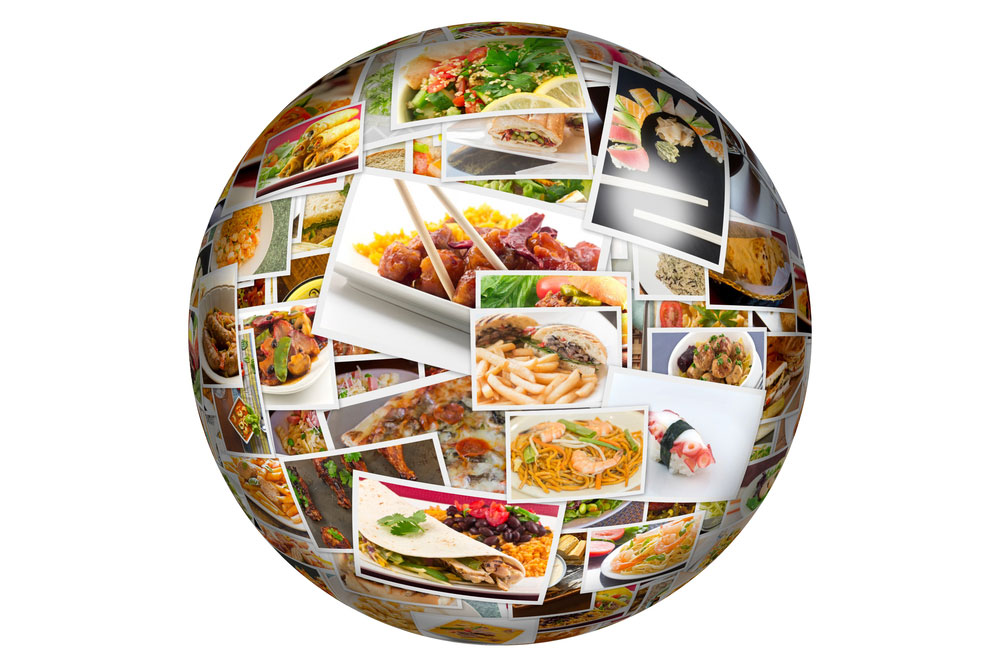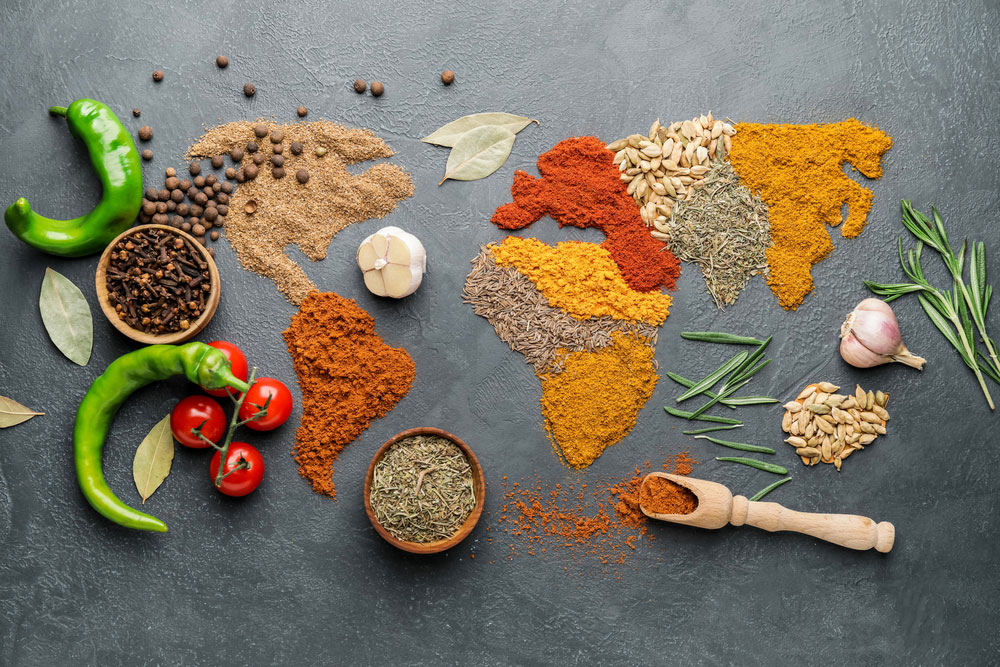The Rise of Virtual Taste Technology and Its Impact on Globalization of Flavors
Virtual taste technology is a novel method of mimicking the flavor and texture of food products, allowing individuals to sample new and diverse flavors from across the world. It has the potential to change the way we buy for and enjoy food, and it will have a big influence on the globalization of tastes.
One of the most notable benefits of virtual taste technology is that it may let people try new meals and flavors. Some people, for example, may be afraid to try new cuisines or may not have access to specific types of cuisine in their community. Virtual taste technology allows users to enjoy these cuisines without physically traveling to another nation or location.
This technology may also aid in the promotion of cultural interchange and understanding. People can develop a better knowledge of diverse civilizations and ways of life by trying new flavors and cuisines. This can result in a stronger awareness and respect for cultural variety, which is critical in today’s globalized society.
Virtual taste technology also has an influence on flavor globalization by allowing chefs and food makers to experiment with new ingredients and flavor combinations. Companies may use this technology to test new recipes and tastes before they are manufactured, which can cut product development time and expense.
Virtual taste technology is also assisting in the promotion of lesser-known or underrepresented cuisines and flavors. It can help foster diversity in the food sector and challenge conventional culinary narratives by allowing consumers to taste diverse cuisines.
Finally, virtual taste technology is breaking down borders and allowing individuals to sample new and different flavors from all around the world. It has a big influence on flavor globalization because it encourages cultural interchange and understanding, allows for experimenting with novel ingredients and flavor combinations, and draws attention to underrepresented cuisines and flavors. As this technology advances, it has the potential to change how we think about and eat food in a worldwide society.
Investigating the Advantages of Virtual Taste Technologies in a Globalized World
Virtual taste technology is changing the way we experience and eat food, particularly when it comes to discovering new sensations from around the world. Virtual taste technology offers various benefits that might enhance the food discovery experience in a globalized society where people are more interested in exploring new cuisines and sensations from diverse civilizations.
One of the most notable benefits of virtual taste technology is that it facilitates the discovery of new cuisines and flavors from around the world. People may enjoy a large assortment of virtual taste experiences and study the culinary traditions of various nations without having to physically travel with only a few clicks. This allows people to widen their culinary horizons and develop their palates in ways that were previously inconceivable.
Additionally, virtual taste technology has the potential to facilitate cultural interchange and understanding. Individuals may learn about diverse ways of life and break down cultural barriers by having the opportunity to taste the food of different countries. This can aid in the development of empathy, understanding, and respect for variety, all of which are necessary in today’s linked world.
Another advantage of virtual taste technology is that it can assist people in making educated food decisions. People may assess if they like a certain flavor profile or not by delivering a simulated taste experience before making a purchase. This can help prevent food waste and save money over time.
Moreover, virtual taste technology can let people experience and appreciate exotic food in a sustainable way. People may now access a wide range of virtual taste experiences without leaving their homes, reducing their carbon footprint and promoting eco-friendliness.
Finally, virtual taste technology provides various advantages to consumers who want to explore worldwide sensations. It allows people to try new foods and flavors, encourages cultural interaction and understanding, assists people in making educated food choices, and allows for eco-friendly food discovery. As this technology advances, it will become an indispensable instrument in the worldwide investigation of gastronomy.
Virtual Taste Technology and the Future of International Cuisine
Virtual taste technology is having a big influence on the future of world cuisine, allowing chefs and food producers to experiment with novel flavors and ingredients in ways that were previously impossible. This technology is transforming the way people consume and think about food, as well as the way chefs and food producers approach their art.
One of the most significant advantages of virtual taste technology is that it allows chefs and food producers to experiment with novel flavors and ingredients without physically creating and tasting them. This may save time and costs while also allowing chefs to be more creative and imaginative in their approach to cooking. Chefs may quickly and simply try out new flavor combinations and ingredients using virtual tasting technology, and they can make tweaks until they reach the optimum balance.
Virtual taste technology, in addition to facilitating experimentation, is impacting how people consume and think about food. People may now sample various flavors and cuisines from around the world without leaving their homes because to this technology. This can assist to encourage cultural interaction and understanding, as well as allow people to widen their gastronomic horizons in ways that were previously impossible. When more individuals are exposed to new and different cuisines using virtual tasting technology, their tastes and preferences are likely to shift, resulting in a more adventurous and diversified culinary culture.
Additionally, virtual taste technology contributes to the food industry’s sustainability. It can lead to the development of more sustainable and eco-friendly food solutions by allowing chefs and food manufacturers to experiment with novel ingredients and flavors. This can assist lessen the food industry’s environmental effect and create a more sustainable future.
Finally, virtual taste technology is affecting the future of foreign food in a variety of ways. It allows chefs and food producers to experiment with novel flavors and ingredients; it influences how people eat and think about food; and it promotes food sector sustainability. As this technology evolves and becomes more widely available, it is anticipated to play an increasingly vital role in the global food scene.

How Virtual Taste Technology Makes It Easy to Examine Diverse Diets and Eating Habits Throughout the Globe
Virtual taste technology is changing the way that people approach their diets and eating habits by making it easier to explore different culinary traditions from around the world. With this technology, people can experience the taste and texture of different foods without having to physically try them, which can be especially useful for those who are interested in trying out new diets or lifestyles.
One example of this is the increasing popularity of plant-based and vegan diets, which are becoming more and more mainstream in many parts of the world. Virtual taste technology is playing a key role in making it easier for people to explore these diets by enabling them to experience the taste and texture of plant-based and vegan foods before they decide to make the switch.
For those who are interested in plant-based and vegan diets, virtual taste technology can be a valuable tool for discovering new and exciting foods that they may not have tried otherwise. By providing a realistic and immersive experience of different flavors and textures, virtual taste technology can help to overcome any initial hesitations or reservations that people may have about trying new foods, making it easier for them to make the switch to a more plant-based diet.
In addition to plant-based and vegan diets, virtual taste technology can also be used to explore other dietary restrictions or preferences, such as gluten-free or low-carb diets. With this technology, people can experience the taste and texture of different foods without having to worry about any potential negative effects on their health or wellbeing.
Overall, this technology is making it easier for people to explore different diets and eating habits from around the world by providing an immersive and realistic experience of different flavors and textures. As the technology continues to evolve and become more accessible, it is likely that it will play an increasingly important role in helping people to discover new and exciting culinary traditions from around the world.
Virtual Taste Technology’s Problems and Possibilities in a Globalized World
Virtual taste technology is transforming people’s perceptions of food and flavors from across the world. While this technology provides many exciting benefits, it also introduces new problems as it becomes more extensively utilized in a worldwide environment.
One of the difficulties of virtual taste technology is the possibility of cultural appropriation. Using this technology, consumers may enjoy the taste and feel of many delicacies without necessarily comprehending the cultural importance or background behind them. This can result in the commercialization of cultural cuisine, which can be problematic if not done with due regard for the traditions and rituals associated with particular dishes.
To overcome this issue, the technology must be approached with an emphasis on cultural interchange and understanding. Rather of merely commodifying distinct ethnic meals, this technology could be used to promote cross-cultural discourse and enjoyment. This means that food producers and developers must make an effort to understand the cultural value of certain cuisines and offer them in a way that honors their origins.
Another issue with virtual taste technology is the possibility of it being used to encourage unethical or unsustainable food production and consumption habits. This technology, for example, might be used to construct virtual copies of meals produced in unsustainable or immoral ways, such as those involving animal abuse or environmental devastation.
To overcome this issue, it should be applied in a way that encourages sustainable and ethical food production and consumption habits. This implies that food producers and developers should strive to use this technology to promote plant-based and sustainable food alternatives rather than those produced in an unsustainable or immoral manner.
Ultimately, virtual taste technology opens up a plethora of intriguing possibilities for encouraging cross-cultural discussion and appreciation, as well as sustainable and ethical food production and consumption practices. Nonetheless, it is necessary to approach this technology with skepticism and to handle the difficulties it presents in a responsible and intelligent manner.
